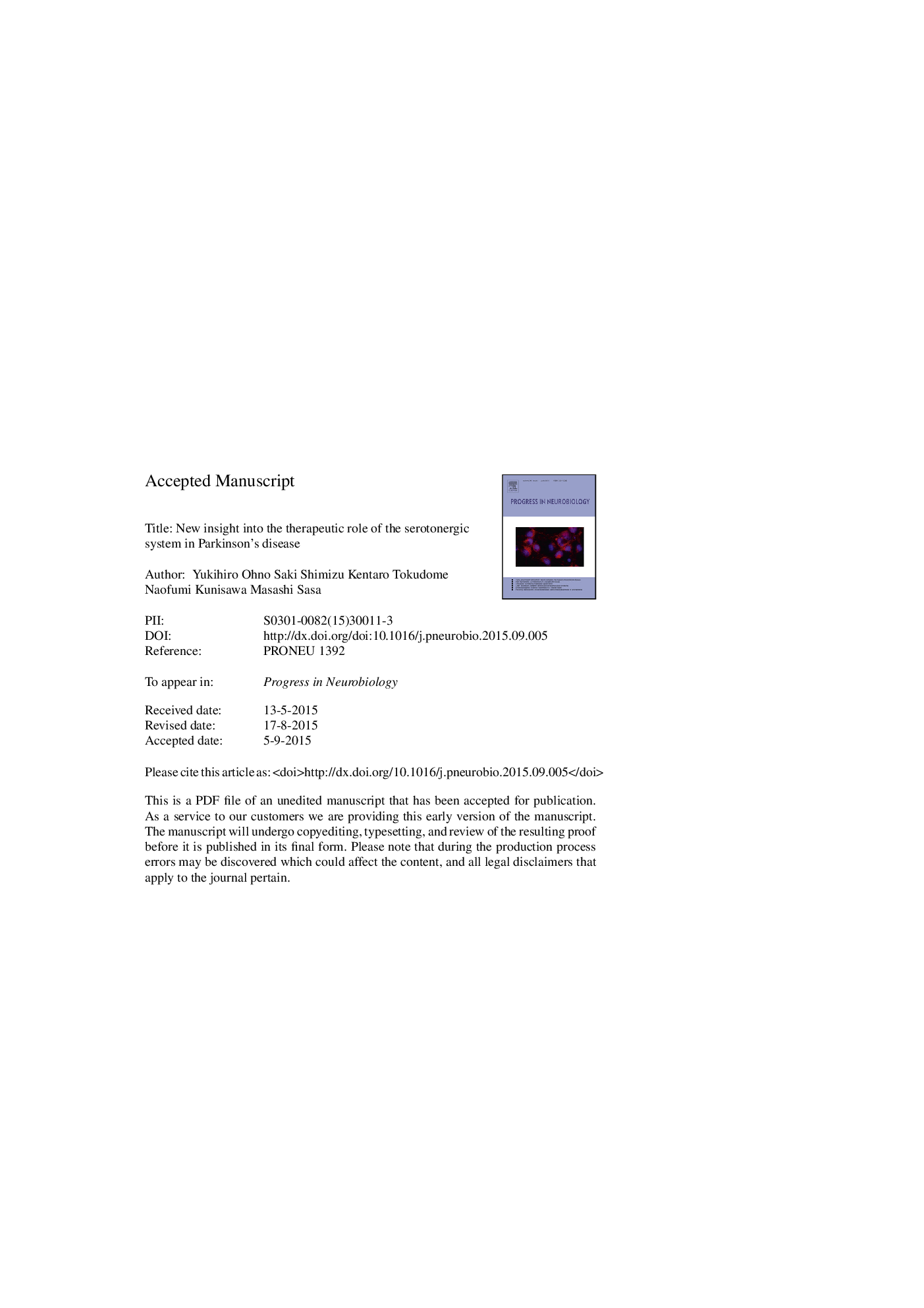| Article ID | Journal | Published Year | Pages | File Type |
|---|---|---|---|---|
| 6286464 | Progress in Neurobiology | 2015 | 108 Pages |
Abstract
Parkinson's disease (PD) is a common, late-onset neurodegenerative disorder that shows progressive extrapyramidal motor disorders (e.g., bradykinesia, resting tremors, muscle rigidity and postural instability) and various non-motor symptoms (e.g., cognitive impairment, mood disorders, autonomic dysfunction and sleep disorders). While dopaminergic agents such as l-3,4-dihydroxyphenylalanine (l-DOPA) and dopamine D2 agonists are widely used for the treatment of PD, there is still high clinical unmet need for novel medications that overcome the limitations of current therapies. Evidence is now accumulating that the serotonergic nervous system is involved in the pathophysiological basis of PD and can provide benefits in the treatment of PD through its diverse functions. Among 5-HT receptor subtypes, 5-HT1A, 5-HT2, 5-HT3 and 5-HT6 receptors play an important role in modulating extrapyramidal motor disorders. In addition, 5-HT1A, 5-HT2, 5-HT3, 5-HT4 and 5-HT6 receptors are implicated in modulation of cognitive impairment, mood disorders (e.g., depression and anxiety) and/or psychosis, which are frequently observed in patients with PD. Specifically, stimulation of 5-HT1A receptors seems to be effective for multiple PD symptoms including parkinsonism, l-DOPA-induced dyskinesia, cognitive impairment, mood disorders and neurodegeneration of dopamine neurons. Blockade of 5-HT2 receptors is also likely to improve parkinsonism, depressive mood and cognitive impairment. In addition, it was recently demonstrated that 5-HT2A inverse agonists can alleviate PD psychosis. All these findings emphasize the therapeutic roles of the serotonergic system in PD and stimulate new insight into novel treatments by modulating 5-HT1A and 5-HT2 receptors.
Keywords
5-HTPK-C6-OH-DAPK-Aselective 5-HT reuptake inhibitormuscarinic acetylcholineMAO-B2,5-dimethoxy-4-iodoamphetamineGPiGIRKCOMTGPCRN-methyl-d-aspartate8-OH-DPATNMDAMPTPQOLADLCatechol-O-methyltransferaseTCA6-HydroxydopamineSNRSubstantia nigra pars reticulataSNCDOIGPEQuality of life1-methyl-4-phenyl-1,2,3,6-tetrahydropyridine5-hydroxytryptamine (serotonin)8-hydroxy-2-(di-n-propylamino) tetralinl-3,4-dihydroxyphenylalaninel-DOPAParkinson's diseasesubstantia nigra pars compactatricyclic antidepressantsSerotonergic systemNon-motor symptomstransmembraneActivities of daily livingSSRImonoamine oxidase-BmAChprotein kinase AProtein kinase CGlobus pallidus5-HT receptorsG protein-coupled receptor
Related Topics
Life Sciences
Neuroscience
Neuroscience (General)
Authors
Yukihiro Ohno, Saki Shimizu, Kentaro Tokudome, Naofumi Kunisawa, Masashi Sasa,
